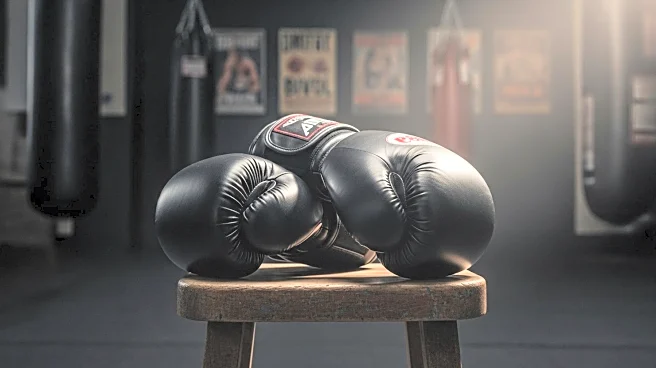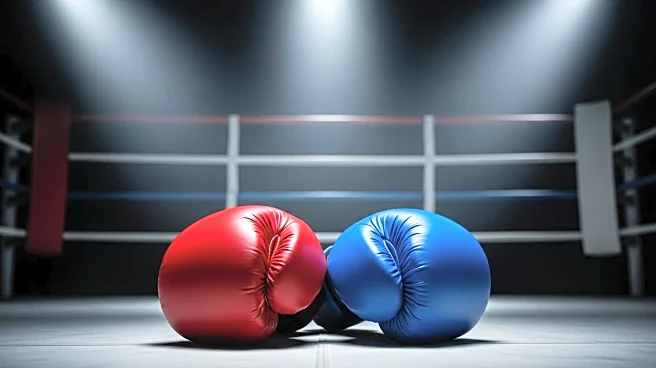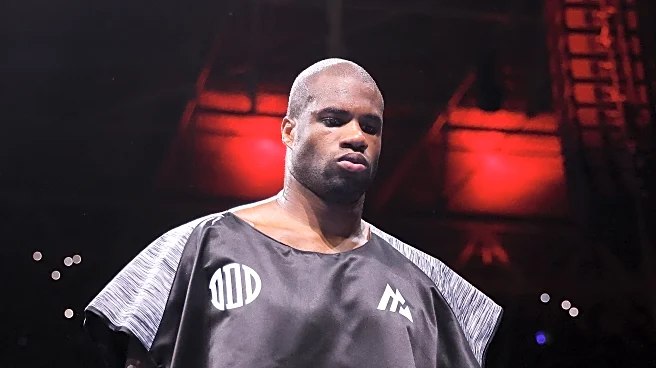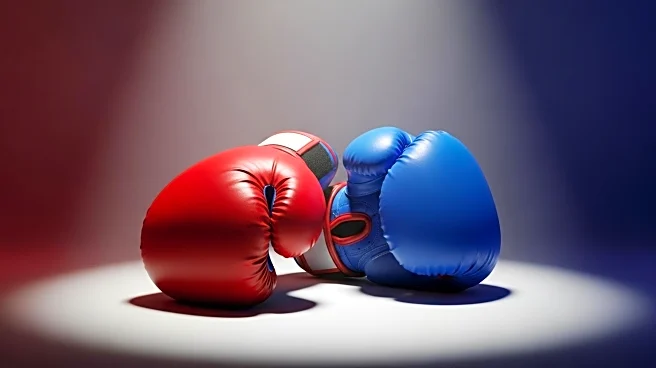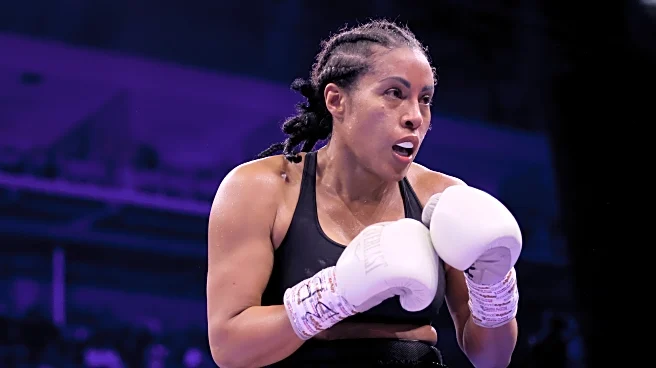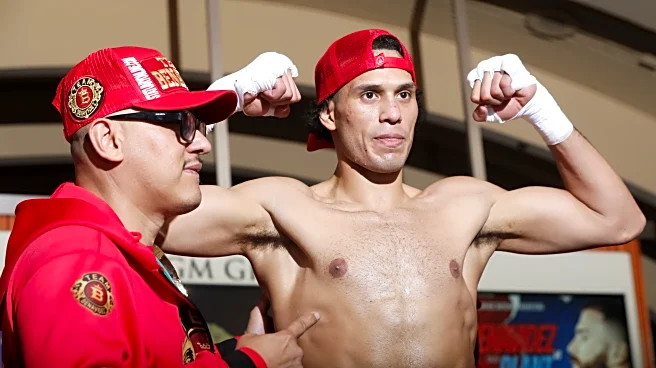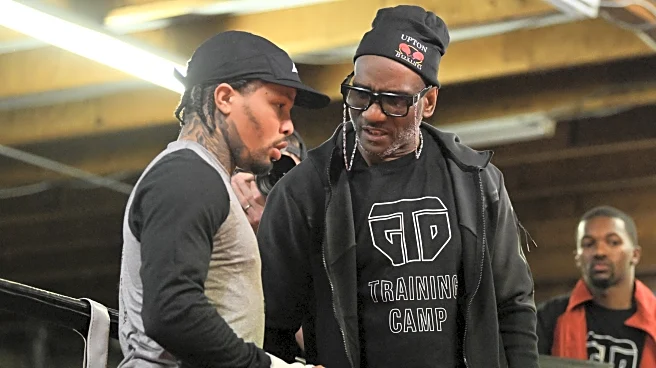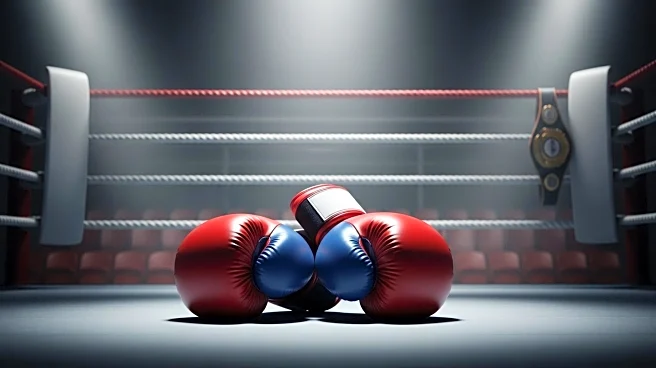What's Happening?
Russian light heavyweight Dmitry Bivol, who holds the WBO, WBA, IBF, and IBO titles, is currently undergoing an intensive rehabilitation program following back surgery. According to boxing analyst Mike Coppinger, Bivol is expected to return to the ring in the first quarter of 2026. The rehabilitation comes after Bivol's last fight against Arthur Beterbiev in February 2025, where he won by majority decision, becoming the undisputed light heavyweight world champion. Bivol's record stands at 24 wins, including 12 by knockout, and one loss. The severity of his injury suggests that his comeback fight might be at catchweight, starting with a moderately challenging opponent.
Why It's Important?
Bivol's return is significant for the boxing world, as he is a prominent figure in the light heavyweight division. His absence due to injury has left a gap in the competition, and his comeback could reignite interest in the division. The rehabilitation and planned return also highlight the physical demands and risks associated with professional boxing, emphasizing the importance of athlete health and recovery. Bivol's return could impact rankings and future matchups, potentially leading to high-profile fights that attract significant attention and revenue for the sport.
What's Next?
As Bivol prepares for his return, the boxing community will be watching closely to see how he recovers and performs post-surgery. His choice of opponent for the comeback fight will be crucial, as it will set the tone for his future in the sport. Stakeholders, including promoters and broadcasters, will likely strategize to maximize the commercial potential of his return. Fans and analysts will be eager to see if Bivol can maintain his championship form and possibly pursue further unification bouts.
Beyond the Headlines
Bivol's situation underscores the broader issue of athlete health management in combat sports. The rigorous demands and potential for injury in boxing necessitate comprehensive support systems for recovery and rehabilitation. This development may prompt discussions on improving medical protocols and support for injured athletes, ensuring their long-term well-being and career sustainability.

